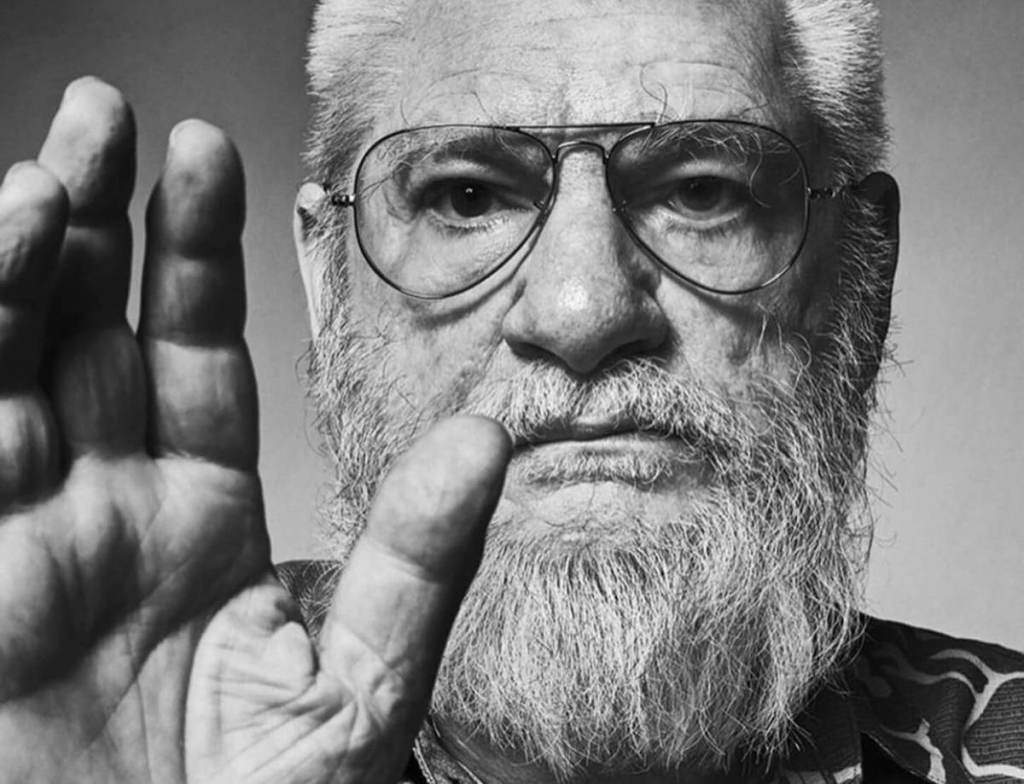Farewell to Dan Graham, one of the fathers of conceptual art
U.S. artist Dan Graham, considered one of the fathers ofconceptual art, passed away yesterday in New York at the age of 79. An artist, writer, photographer, architect, filmmaker, and performer, he was a highly influential figure, with his work leaving an important mark on contemporary art since the 1960s. Announcing his passing were his gallerists Marian Goodman Gallery, Lisson Gallery, 303 Gallery and Regen Projects. The artist leaves behind his wife Mieko Maguro, also an artist.
Born in Urbana, Illinois, on March 31, 1942, he never had aformal education and began his art career in 1964, at the age of 22, as he began to shape his first conceptual works, which were exhibited at the John Daniels Gallery in New York, of which he was also director for some time. He worked between the 1960s and 1970s alongside the great artists of minimalism, such as Carl André, Sol LeWitt, Donald Judd, Dan Flavin, and Robert Smithson. Although he has recently disavowed the term “conceptual art,” he is universally recognized as one of the pioneers of this art form, due primarily to his early work based on text, typographic wall pieces, and poems, as well as the 1966 publication Homes for America, considered one of the theoretical foundations of conceptual art.
Since the late 1970s, Graham had been making a series of public architectural installations, which he called “pavilions,” derived from geometric shapes and executed in sheets of glass, mirrors and steel armatures. Graham wanted his pavilions to function as punctuation marks, pausing or altering the experience of physical space, providing a momentary diversion devoted to romance or play, or as places to delve into other activities, such as reading or watching videos. These seemingly simple structures are reminiscent of many of the artist’s early experiments with perception, reflection, and refraction, but they depart from these in their setting not as gallery-like, but as long-term additions to the landscape.
“Graham’s works,” wrote Alessandro Rabottini, “trigger a profound reflection on our perception of time and memory, as well as on our body’s experience of space. Such research absorbs the artist’s interest throughout the 1970s and is expressed through numerous installations and performances in which the use of CCTV cameras, videos, mirrors and other devices that explore the concepts of space, time, identity and perception recurs. During the 1980s and 1990s, these themes generated an ambitious series of installations suspended between the space of sculpture and that of architecture, the so-called Pavillions (’Pavilions’), structures made of glass, iron and mirror materials, built in public places and accessible to visitors. Even in the case of these installations-whose original models Graham built to commission their production are exhibited here in the collection-the public is invited to take part in a dialogue with the work and the space-time in which it is placed. The surfaces of these environments play with the mirroring or transparency effects of glass and with the distortion created by curved superï¬ces, thus modiï¬cating our perception and leading the viewer to an exercise in awareness of his or her own body in space and time.”
His most famous works include Pavillions such as Two adjacent pavilions (1978-1982), Two-way mirror cylinder inside cube (1981-1991), Fun House (1997), Children’s day care, CD ROM, cartoon and computer screen library project (1998-2000), and then again the video Performer / Audience / Mirror (1975, also part of the Castello di Rivoli collection) and the performance Public Spaces/Two Audiences (1976).
“Graham,” his gallerists recall, “had an encyclopedic sphere of references and wrote about everything from Dean Martin to rock music, from astrology to urban architecture. His wit, generosity and irascibility will be greatly missed by all who knew him. Our deepest condolences go out to his family and friends.”
 |
| Farewell to Dan Graham, one of the fathers of conceptual art |
Warning: the translation into English of the original Italian article was created using automatic tools. We undertake to review all articles, but we do not guarantee the total absence of inaccuracies in the translation due to the program. You can find the original by clicking on the ITA button. If you find any mistake,please contact us.




























